
The Future of Spend Analysis: Trends to Watch Out For
In this blog, we will delve into the exciting future of spend analysis and discuss the key trends that forward-thinking organizations should watch out for.

Spend analysis is a comprehensive process that involves collecting, consolidating, cleansing, categorizing, and analyzing data related to an organization’s procurement activities. The primary goal of spend analysis is to gain a clear understanding of an organization’s spending patterns and identify opportunities for cost reduction, efficiency improvements, and compliance assurance.
Spend analysis consulting aims to lay the foundation for an organization-wide initiative focused on reducing the total cost of ownership, enhancing efficiency, and ensuring compliance with procurement policies and regulations. Consultants provide expert guidance, tools, and techniques for organizations to gain valuable insights into their spending patterns, identify potential savings, and implement effective sourcing strategies.
Spend analysis is crucial for organizations as it helps them identify inefficiencies, uncover hidden savings opportunities, and make data-driven decisions to optimize procurement processes. By gaining a deep understanding of their spending patterns, organizations can:
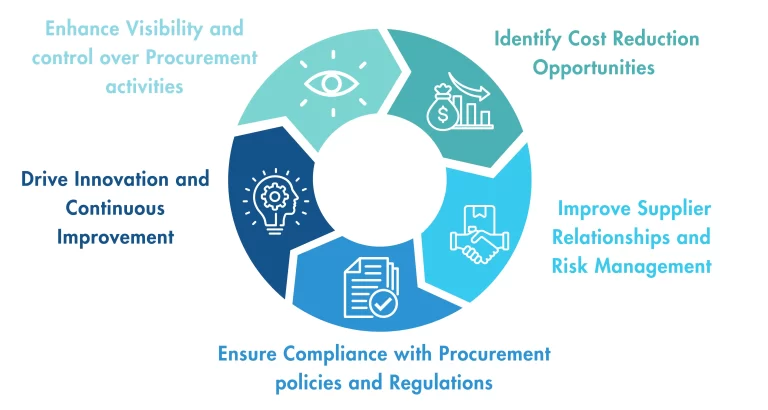
1. Enhance visibility and control over procurement activities: Spend analysis provides a comprehensive view of an organization’s procurement activities, enabling better decision-making and resource allocation.
2. Identify cost reduction opportunities: By analyzing spending data, organizations can uncover potential savings through supplier consolidation, contract negotiation, and process improvements.
3. Improve supplier relationships and risk management: Spend analysis can help organizations identify critical suppliers, assess their performance, and mitigate potential risks associated with supplier disruptions or non-compliance.
4. Ensure compliance with procurement policies and regulations: Spend analysis enables organizations to monitor and enforce adherence to procurement policies and regulatory requirements, reducing the likelihood of non-compliant activities.
5. Drive innovation and continuous improvement: With a thorough understanding of spending patterns, organizations can identify areas for innovation, implement best practices, and foster a culture of continuous improvement within their procurement function.
EmpoweringCPO is a leading procurement consulting firm with over 12 years of experience in providing top-notch spend analysis and procureent services. With a focus on delivering customized solutions and empowering organizations to optimize their procurement processes, EmpoweringCPO has established itself as a trusted partner to a wide range of clients, including numerous Fortune 500 corporations.
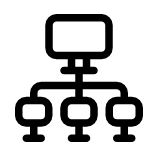
EmpoweringCPO boasts an extensive track record of working with over 700 Direct and Indirect categories across various industries and verticals. This experience enables them to provide tailored and comprehensive spend data analysis solutions that cater to the unique requirements of each organization.

Since its inception, EmpoweringCPO has worked with more than 24 clients, including Fortune 500 corporations, helping them optimize their procurement processes, identify cost-saving opportunities, and enhance overall efficiency. The company’s impressive portfolio is a testament to their commitment to delivering exceptional results and building long-lasting relationships with their clients.

EmpoweringCPO is renowned for its ability to develop procurement and spend analytics dashboards using multiple technologies and platforms, catering to client preferences. By adopting Business Intelligence and Dashboard platforms classified in Leaders quadrants, EmpoweringCPO ensures that clients receive the best user experience and insights, allowing them to make informed decisions to optimize their procurement activities.

While spend analysis typically focuses on the top 90% of an organization’s spend, EmpoweringCPO’s expertise extends to managing the bottom 10% through their Tail Spend Management services. By addressing this often-overlooked segment, EmpoweringCPO helps organizations unlock additional cost-saving opportunities and gain a more comprehensive understanding of their procurement landscape.
The spend analysis process begins with gathering spending data from various sources, systems, tools, and applications within an organization. This data can include information from Purchase Orders, Non-Purchase Order transactions, invoices, and contracts, providing a comprehensive view of an organization’s procurement activities.
Once the data is collected, it is collated in a uniform format and undergoes a thorough cleaning process. This involves identifying and removing duplicate entries, correcting inaccuracies, and ensuring that the data is reliable and suitable for analysis.
A tailored taxonomy is essential for effectively categorizing and analyzing an organization’s spending data. This taxonomy is unique for each organization and depends on its spending characteristics, procurement processes, and industry-specific requirements.
Taxonomies are typically multi-layered, ranging from 3 to 6 layers. These layers are organized in a descending hierarchy and include groups, families, categories, and commodities. The last level, known as the commodity level, represents a unique set of suppliers with specific core competencies and is ideally suited for participation in a unique RFP.
With the taxonomy prepared and finalized, the collected data is classified according to the new structure and taxonomy. This classification process ensures that the data is organized in a way that facilitates meaningful analysis and generates actionable insights.
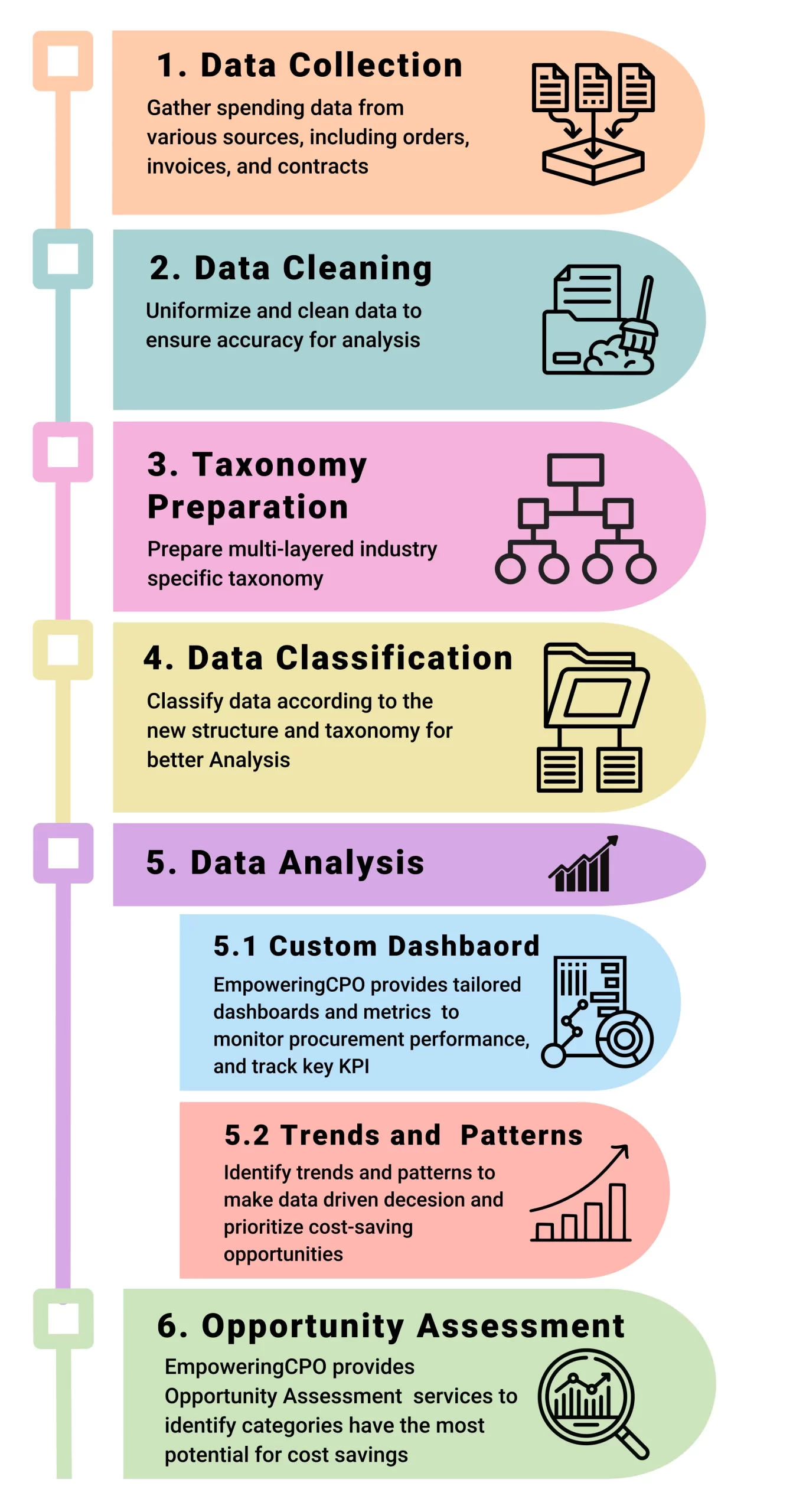
Through the use of customized dashboard tools, organizations can analyze their classified spend data and identify trends and patterns across different groups, families, categories, commodities, and time intervals. These insights help organizations make data-driven decisions, prioritize cost-saving opportunities, and optimize their procurement strategies.
EmpoweringCPO’s expertise in dashboard creation allows them to provide clients with tailored dashboards and metrics that display the organization’s spending data as per the pre-decided taxonomy. These dashboards and metrics enable organizations to monitor procurement performance, supplier risk assessment, track key performance indicators (KPIs), and make informed decisions to improve efficiency and effectiveness.
Opportunity assessment is a critical component of the spend data analysis process, as it helps organizations identify categories that should be prioritized for strategic sourcing initiatives. By conducting an opportunity assessment, organizations can determine which categories have the most potential for cost savings and process improvements, ensuring that resources are allocated effectively and procurement strategies are optimized.
| # | Ease of Sourcing & Implementation | Savings Potential |
| 1 | Availability & quality of data | Potential to leverage |
| 2 | Degree of customization in design | Level of commoditization |
| 3 | Availability of suppliers/ geographical barriers | Competition in the market |
| 4 | Number of incumbent suppliers | Demand-Supply scenario |
| 5 | Time to qualify suppliers/ switching risk | Current compliance mechanism |
| 6 | Organizational sensitivity/ contractual complexity | Time since the last RFP |
Several factors contribute to the ease of sourcing and implementation for a specific category, including the availability and quality of data, the degree of customization required in design, supplier availability, geographical barriers, the number of incumbent suppliers, and the time required for supplier qualification or switching risk.
The potential savings for a category depend on factors such as the ability to leverage existing contracts, the level of commoditization, competition in the market, demand-supply scenarios, current compliance mechanisms, and the time elapsed since the last RFP.
The opportunity assessment process involves analyzing the classified spend data and evaluating categories based on the factors mentioned above. This analysis helps organizations prioritize categories that offer the most significant savings potential and are relatively easier to source and implement. Often criterion of sustainable procurement is also considered for RFP.
The steps involved in this process include:
1. Evaluating categories based on ease of sourcing and implementation factors and assigning a score to each category.
2. Assessing categories based on their potential savings and assigning a score to each category.
3. Combining the scores for each category to derive an overall prioritization score.
4. Identifying categories with the highest prioritization scores as candidates for RFPs or for challenging.
By focusing on the most promising categories, organizations can maximize their cost-saving opportunities, streamline procurement processes, and enhance overall efficiency.
Spend analysis dashboards and opportunity assessment tools enable organizations to classify their spending data accurately and efficiently. This allows for a more comprehensive understanding of procurement activities and ensures that decision-makers have access to reliable information.
By analyzing categorized spend data, organizations can identify and quantify potential savings opportunities across various levels of spending. This helps prioritize cost-saving initiatives and ensures that resources are allocated to the most impactful projects.
Spend analysis dashboards provide real-time insights into an organization’s procurement performance, enabling decision-makers to make informed choices based on data-driven insights. This helps organizations optimize their procurement strategies, reduce total cost of ownership, and improve overall efficiency.
Spend analysis tools help organizations establish a baseline of their current procurement performance, which can be used as a starting point for improvement initiatives. Additionally, these tools enable the development of compelling business cases for strategic sourcing projects, which can be used to gain stakeholder buy-in and support.
By identifying priority categories and potential savings opportunities, spend analysis dashboards and opportunity assessment tools can be used to develop a sourcing roadmap and implementation plan. This plan outlines the recommended sourcing projects and provides a clear path towards achieving procurement objectives and cost savings goals. By following this roadmap, organizations can systematically improve their procurement processes and maximize the benefits of their spend analysis efforts.
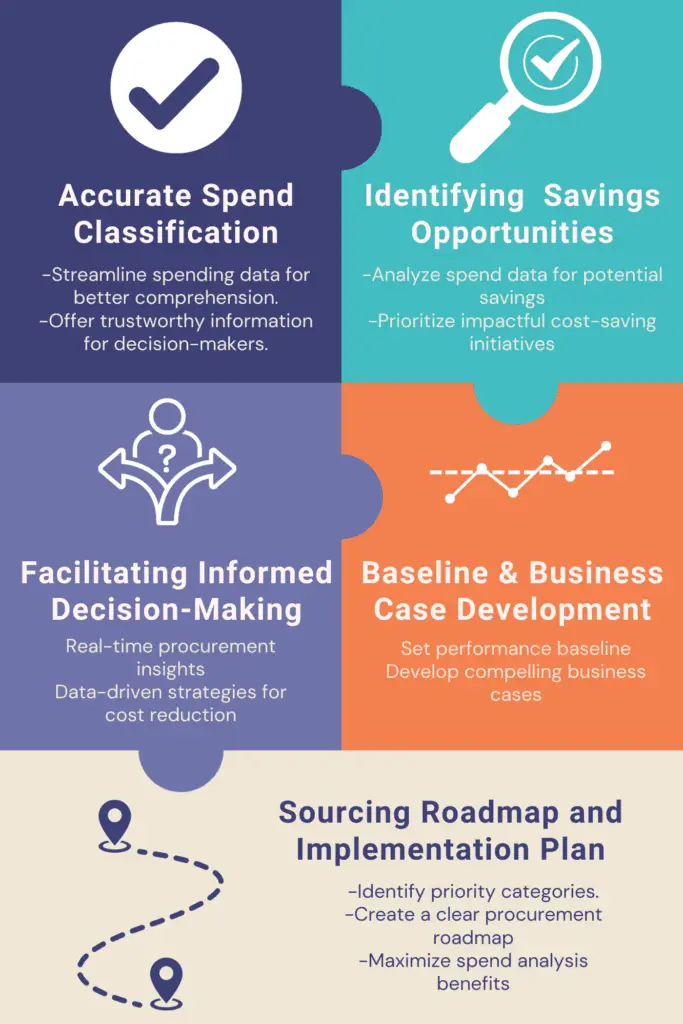
EmpoweringCPO offers a highly customized and flexible approach to spend analysis, developing spend dashboards and tools using various technologies and platforms according to client preferences. By adopting Business Intelligence and Dashboard platforms from the Leaders quadrants, EmpoweringCPO ensures that clients receive the best user experience and insights, tailored to their unique procurement needs.
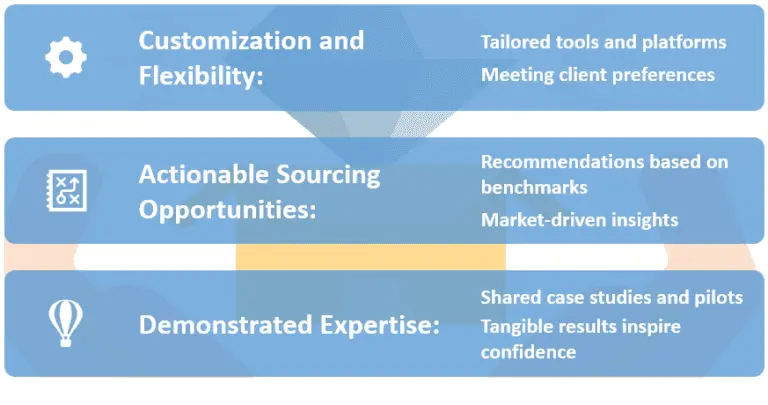
EmpoweringCPO goes beyond simple data analysis to provide clients with actionable sourcing opportunities based on external market conditions and benchmark data. By considering factors such as clients’ business forecasts, industry trends, and competitor analyses, EmpoweringCPO delivers targeted recommendations that drive cost savings and optimize procurement processes.
To demonstrate their skills and capabilities, EmpoweringCPO is eager to share case studies and sample category profile decks from their extensive experience working with a diverse range of clients. Additionally, their cost reduction consultants can conduct pilot projects, allowing potential clients to witness first-hand the value and expertise that EmpoweringCPO brings to the table. These case studies and pilot projects showcase the tangible results and success stories of EmpoweringCPO’s spend analysis services, inspiring confidence in their ability to deliver exceptional results for any organization.
Spend analysis plays a vital role in enhancing procurement efficiency by enabling organizations to collect, classify, and analyze their spending data. Through this process, companies can identify sourcing and cost reduction opportunities, streamline procurement processes, and reduce the total cost of ownership. By implementing a robust spend analysis program, organizations can make data-driven decisions and prioritize strategic sourcing initiatives that deliver the most significant cost savings and process improvements.
EmpoweringCPO has established itself as a trusted partner for spend analysis and consulting, offering a comprehensive suite of services that cater to clients’ unique procurement needs. With a wealth of experience across diverse industries and verticals, EmpoweringCPO one of the leading strategic sourcing companies has successfully helped numerous Fortune 500 corporations optimize their procurement strategies and achieve substantial cost savings. By providing customized solutions, real-time insights, and an unwavering commitment to delivering exceptional results, EmpoweringCPO is the ideal partner for organizations looking to elevate their procurement capabilities and maximize the benefits of spend analysis.
These are quite recently the absolute most normal inquiries we get inquired.
Spend Analysis is a detailed process involving the collection, cleaning, categorizing, and analyzing of procurement data to gain a comprehensive understanding of an organization’s spending patterns. It’s essential for identifying cost-saving opportunities, enhancing procurement efficiency, and ensuring compliance with procurement policies.
The primary objectives include reducing total cost of ownership, enhancing efficiency, and ensuring compliance with procurement policies. It helps organizations make data-driven decisions, thereby improving their procurement processes.
With over 12 years of experience and a portfolio that includes Fortune 500 corporations, EmpoweringCPO offers customized solutions based on extensive experience across over 700 Direct and Indirect categories in various industries.
We initiate the process by collecting data from diverse sources within your organization. This data undergoes rigorous cleaning to identify and remove duplicates and correct inaccuracies, ensuring it’s reliable and analysis-ready.
A customized taxonomy is a tailored classification system designed to fit your organization’s unique spending characteristics and industry-specific requirements. It serves as the backbone for meaningful data analysis.
Through our customized dashboards, you can monitor procurement performance, track KPIs, and make informed decisions. Opportunity assessment helps prioritize categories that offer the most significant savings potential and are easier to source, giving you a clear path for strategic initiatives.
Our approach is highly customized and flexible. We employ Business Intelligence and Dashboard platforms from the Leaders quadrants to offer the best user experience. We also provide real sourcing opportunities based on market conditions and benchmarks, rather than just basic data analysis.
Our deliverables include accurate spending classification, identification and quantification of savings opportunities, facilitation of informed decision-making, and development of sourcing roadmaps and implementation plans.
Absolutely, we’re happy to share case studies from our extensive experience across industries. We can also conduct pilot projects to demonstrate the value and expertise we bring to your spend analysis efforts.
You can reach out to us through the contact details on our website. We’ll work closely with you to understand your specific challenges and customize our services to meet your unique needs.

In this blog, we will delve into the exciting future of spend analysis and discuss the key trends that forward-thinking organizations should watch out for.

The blog explores the challenges faced by organizations in managing spend effectively and outlines the benefits of implementing a spend analysis solution, including enhanced visibility, cost savings, risk mitigation, and strengthened compliance.

This blog highlights the transformation of procurement from transactional interactions to strategic partnerships, emphasizing the importance of data-backed insights in negotiating better contracts and fostering trust.
Compliance management is very critical as otherwise the procurement organization may run into a scenario where there is a huge gap between realized savings and reported savings. Many procurement functions estimate large savings numbers when contracts are signed. They also invest significant time and effort in negotiating contracts for necessary goods and services, only to have a third or more of their purchasing dollars flow outside those deals. Some of the obvious fall-outs of non-compliance and maverick purchases are:
As compared to the current contract that was finalized after the sourcing process, the tool helps in tracking:
The objective of this tool is to ensure that the orders are placed only with the vendors that were shortlisted after the sourcing process and at the same price that was agreed upon and negotiated during and after the strategic sourcing process.